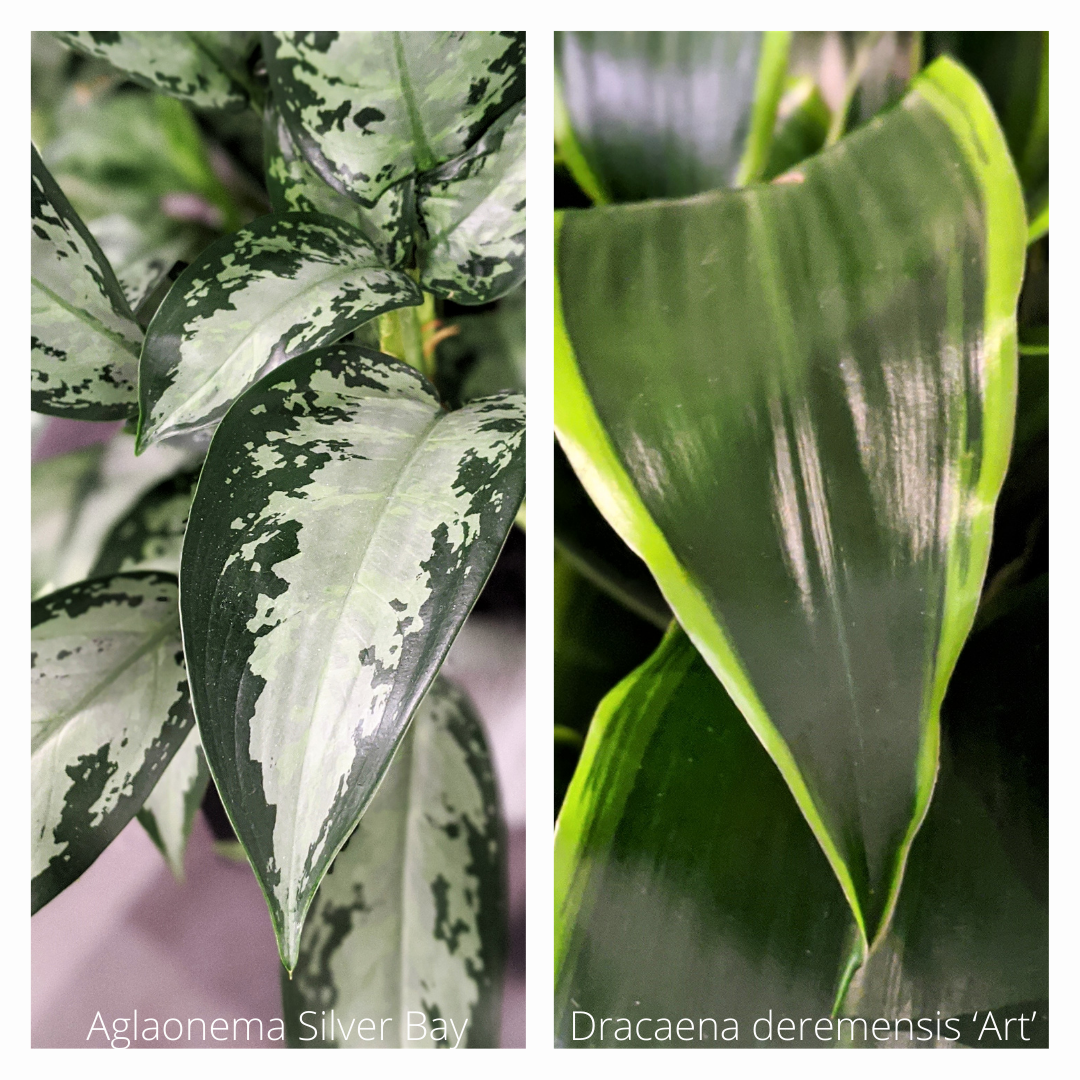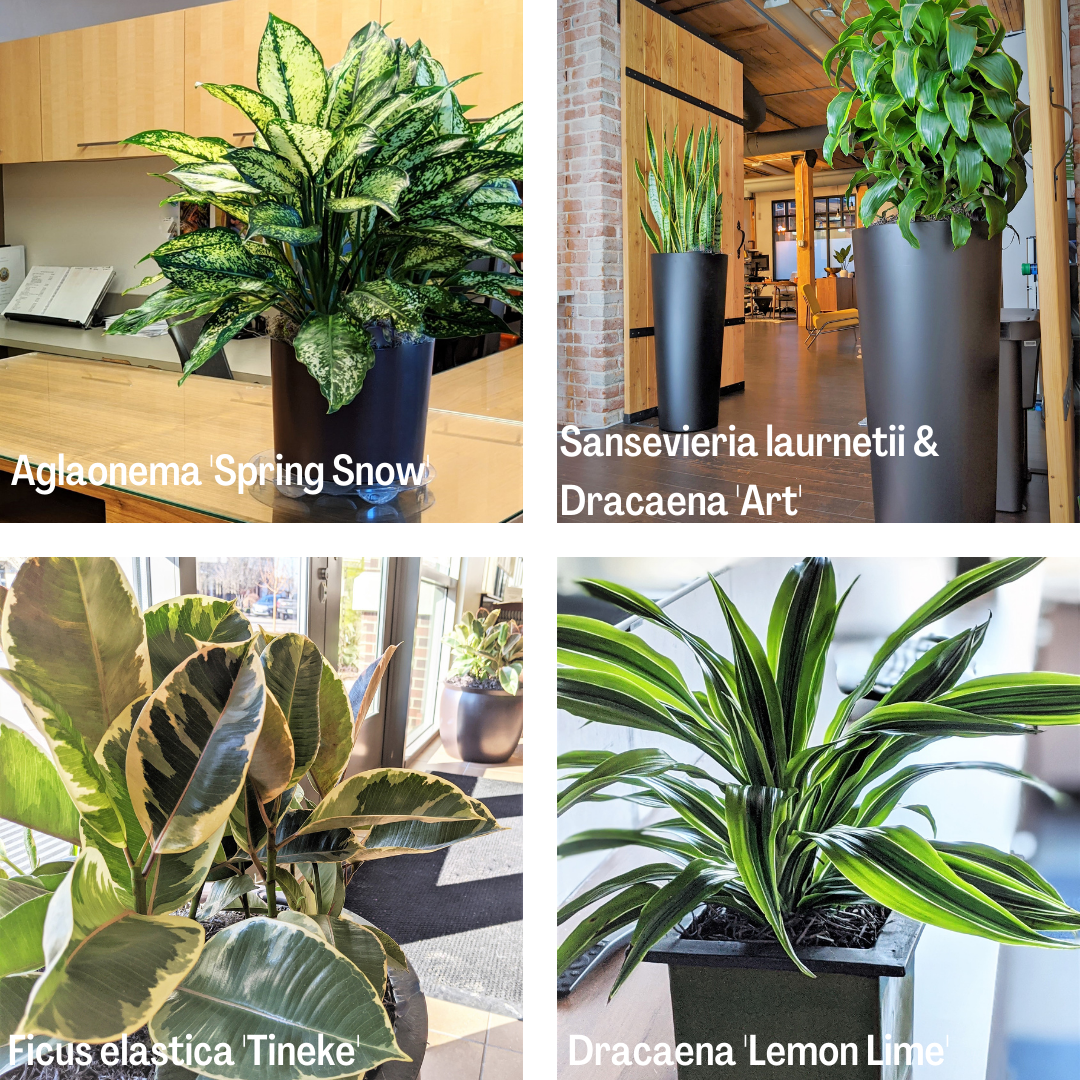What is a Variegated Plant?
by T. E. Bonstrom
What are Variegated Houseplants and Do They Need Special Care?
Indoor plants come in hues of every green imaginable, from bright chartreuse tones, to soft grey-sage, to dark forest-green. Most leaves are a consistent coloration from leaf tip to stem. However, plants with variegated foliage, which are leaves that have a variety of colors and patterns, are trending. Variegated foliage manifests as intricate stripes, speckles, splashes, streaks, or as accented margins on leaves. The popularity of variegated plants is booming, due to their unique markings, which can be as eye-catching as a painted canvas. Below are two close-up photos. Notice the heavily contrasted tones on leaves of this Silver Bay Aglaonema, or the more subtle, but impactful margin on the leaf of this Dracaena Art:

Causes of Variegation
Variegation in leaves exist because of the absence of chlorophyll (green pigment) in plant cells. There are multiple reasons this develops. Certain variegated plants occur naturally, where this genetic camouflage gives them advantages against herbivorous creatures. Occasionally a variegation is the result of a viral infection. However, most variegated plants that we enjoy in our offices and homes are cultivars with deliberate mutations, where growers will use propagation techniques to create plants specifically bred for their multi-tonal leaf colors. A number of plant species with specific variegation are scarce, making the success of propagation difficult. This scarcity can influence the availability and cost of variegated plants, as well as demand.
Variegated Houseplant Care
Variegated plants have foliage with less chlorophyll, thus they require different lighting, which alters its need of water and nutrients. A plant that naturally has less chlorophyll needs more light to produce its own food, while a plant that is primarily dark green can handle lower light conditions.
Any plant in low light, and plants with an inability to utilize light—such as variegated plants—will not absorb water as well as a plant placed in bright light. Biome’s horticulture experts recommend frequent checks of the soil and only watering when soil is dry at the root ball level. Furthermore, a plant’s water needs change during each season of the year. Assuming the plant stays in the same spot, the frequency of watering can become a learned trait for the plant owner.
Enjoying Variegated Plants
Indoor plants with variegated foliage are an excellent addition to the built environment. Although many are two-toned (bi-colored), it is becoming increasingly common to find tri-colored, with shades of green, red, pink, purple and more. These ‘painted’ leaves add drama and interest to any space. Unlike blooming plants, whose colors fade, the multi-hued leaves of variegated foliage lasts the lifetime of the plant. Local garden centers may offer variegated indoor plants, such as the ones pictured below:
Another option is to have the Biome experts design, install, and maintain variegated plants in your home or office. Contact us today for more information on these natural painted beauties: Variegated Plants.



